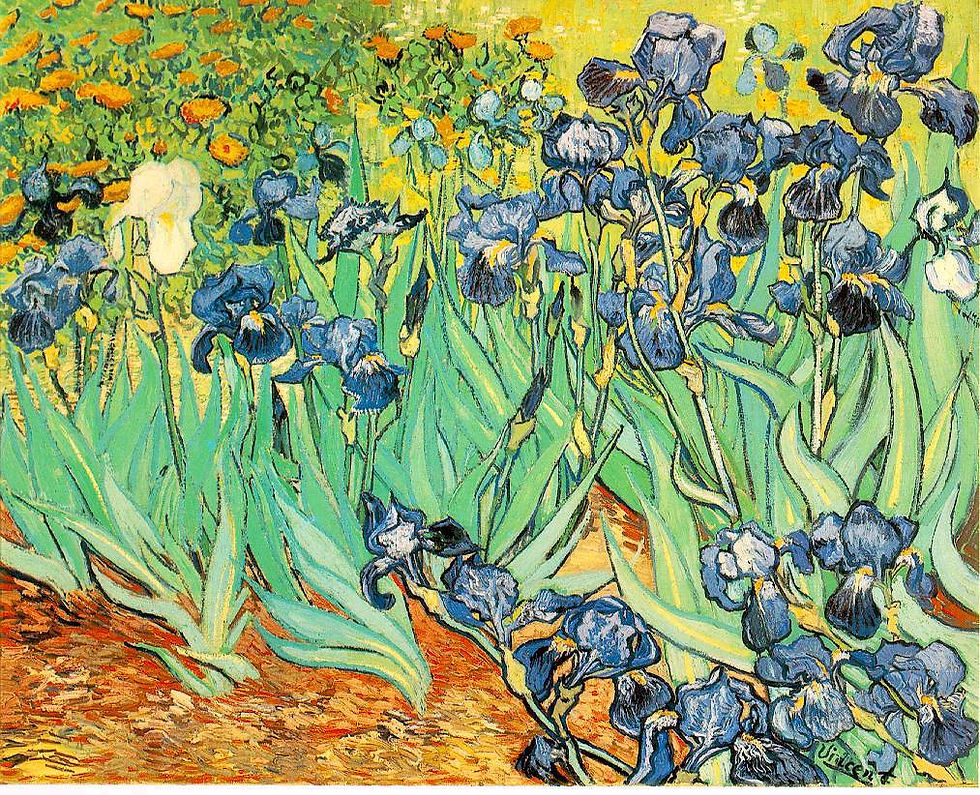Van Gogh in Provence: A Stay That Changed the History of Art
- Georges Coulomb
- Jun 8
- 3 min read
In February 1888, Vincent van Gogh left Paris and moved to Arles in the south of France. He would spend only fifteen months there… but this short period was enough to revolutionize his painting and the history of art as we know it.

☀️ A Painter in Search of Light
Paris, winter 1888. Van Gogh was exhausted — tired of the city, the gray skies, the artistic scene without soul. He longed for a place where he could paint in the sun, surrounded by nature and real life.
He chose Arles, a small Provençal town still untouched by industrialization.
“I want to go south to see a very different country, to see another light.”
And indeed, the southern light transformed his palette. Gone were the dark, earthy tones — in Provence, Van Gogh began painting with yellows, cobalt blues, vermilions, and olive greens.
🖌️ An Explosion of Color and Style
During his time in Arles, Van Gogh produced over 300 works — paintings, drawings, sketches. It was the most prolific period of his life.
Some of his most iconic works from Provence:
Sunflowers 🌻
Starry Night Over the Rhône ✨
The Night Café
The Langlois Bridge
Van Gogh’s Bedroom in Arles
The Alyscamps, Garden of the Asylum, and more
He developed a unique, vibrant, and emotionally charged style, marked by expressive brushstrokes, distorted forms, and unreal colors. He wasn’t painting what he saw — he was painting what he felt.
🏡 The "Yellow House" and the Shattered Dream
Van Gogh rented a small home in Arles — the now-famous Yellow House. He dreamed of turning it into an artists' collective, a kind of “studio of the South.” He invited his friend and rival, Paul Gauguin, to join him.
But the dream quickly fell apart. Tensions between the two men rose. In December 1888, after a violent argument, Van Gogh suffered a mental breakdown and cut off his ear. Gauguin fled. The dream was over.
🏥 Saint-Rémy-de-Provence: Painting as Therapy
After this traumatic event, Van Gogh was admitted to the Saint-Paul-de-Mausole asylum in Saint-Rémy-de-Provence in May 1889. And yet, he continued to paint relentlessly — almost daily.
There, he created some of his most emotionally charged and spiritually resonant works:
The Starry Night (not to be confused with Starry Night Over the Rhône)
The Cypresses
Irises
The Olive Trees
The surrounding nature became a mirror of his inner state. His painting grew more introspective, mystical — and yet more liberated than ever.
🌍 A Global Influence Born Under the Provençal Sky
When Van Gogh left the South in 1890 to be closer to his brother in Auvers-sur-Oise, he had no idea he had just reinvented modern painting.
Van Gogh’s Provençal period profoundly influenced:
Fauvism (Matisse, Derain) with its vivid colors and bold outlines
Expressionism (Munch, Kirchner) with its emotional intensity
Even abstract art, through his symbolic and non-literal interpretation of reality
In just over a year, he had opened a whole new path.In Provence, Van Gogh became Van Gogh.
📍 Following Van Gogh’s Footsteps in Provence
Today, visitors can still walk in the footsteps of the master in several preserved sites:
The Van Gogh Trail in Arles, which connects the real-life scenes from his paintings
The Vincent van Gogh Foundation in Arles, focusing on his contemporary legacy
The former Saint-Paul asylum in Saint-Rémy, open to the public
The timeless Provençal landscapes of the Alpilles, olive groves, and lavender fields
🎨 Conclusion: A Genius Revealed by the Light of the South
Van Gogh’s stay in Provence was short, unstable, even tragic. But it was also decisive, luminous, and revolutionary.
It’s here that he broke free of convention, gave in to instinct, and turned his turmoil into beauty. Here that he moved from troubled painter to visionary genius.
Without Arles, without Saint-Rémy, without the Southern light, we might never have seen the full force of his art.

🔗 Pour aller plus loin
📚 Lettres à Theo – les correspondances de Van Gogh depuis Arles
🎥 La Passion Van Gogh (film d’animation, 2017)
🎨 Fondation Vincent van Gogh Arles – site officiel





Comments